Creating a Recovery Drive in Your Windows 8.1 Machine
Ever experienced a minor problem in your Windows computer that has later on developed into a serious one? Most problems that are memory (RAM) or hard drive related can lead to some dire consequences that often puts your files at risk. You surely don’t want to lose all of those important photos that you had in your last family outing or those files that are crucial to your business or work. That’s the reason why you need to learn some maintenance and as well as other security steps that would help preserve your files and as well as your computer settings which took you months or even years to gather, learn and apply. Starting from scratch with an old computer really doesn’t feel good enough especially if the thought of losing all your precious files is still lingering but thankfully, these possible problems can be prevented with some very useful tool that is built in with the Windows operating system.
In this tutorial, we will be learning the steps in how you can use one of the security features in Windows 8.1 which is called System Recovery but before going into the details, we will first discuss the different ways in how you can access it in your computer.
Accessing the System Recovery Feature
Using any tool in your Windows 8.1 computer means that you first need to learn how to access it. You might already know how to get to the System Recovery feature in Windows Vista and as well as in Windows 7 but everything has changed in Windows 8.1 which is why you need to learn some ways in accessing this same tool in Microsoft’s brand new operating system edition. To make everything more complete, we will first review the steps involved in accessing this tool in Vista and Windows 7.
The steps involved in getting into the System Recovery tool on previous editions of Windows are essentially the same so you don’t need to be confused about it. The screenshots that are shown below are taken on a Windows 7 computer but you can also follow it even in a computer running on Windows Vista. To start, you will need to click on the Start Button or press on the Windows key in order to access the Start Menu.
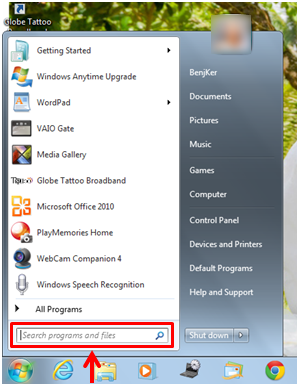
Once the Start Menu opens, just enter the word “recovery” into the search input box that is located at the bottom and wait for a few seconds until the search results appears on top. From the search results, simply look for the one that says “Recovery” and wait until a Control Panel Window opens showing you options for restoring your computer to a previous working state. From here, just click on the link located at the bottom which says “Advanced recovery methods”.

On the Window that follows, you can select between two available methods in restoring your machine. The first one which says “Use system image you created earlier to recover your computer” is what you should select if you already created a system image to be used in helping your machine recover from a bad error while the second option that says “Reinstall Windows (requires Windows installation disk)” is the one that should be selected in case the first one would not work. In this option, all your existing files will be deleted but you can restore them in case you saved a backup copy. Also, you need to take note that all of the programs and apps that you installed before will be deleted which means that there will be a need for you to reinstall them.
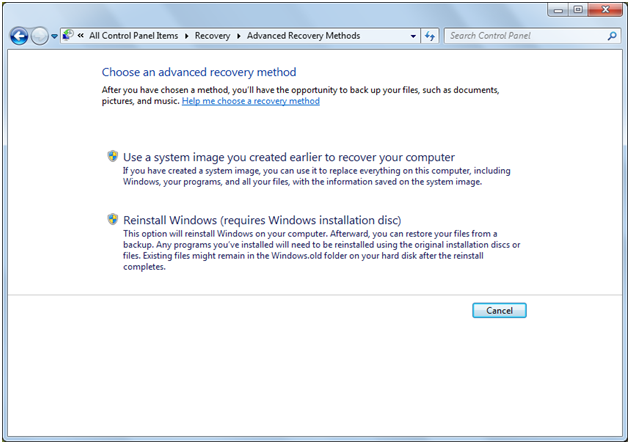
Accessing System Recovery in Windows 8.1
If you own a computer that runs in the latest Windows operating system edition, accessing the same feature in it is quite different but is a lot easier compared to how it is accessed in previous versions such as Vista and Windows 7. Since the Start Menu is no longer existing in Windows 8.1, you will need to access the Start Screen by pressing the Windows key or clicking on the Start Button. Once this screen opens, just press Windows + S in your keyboard and the Search screen will appear from the right edge. From here, simply enter the word “recovery” into the search input box that is located at the top.

After doing so, just wait for a few seconds and the search results will start appearing below the input box. From here, simply look for the result that says “Create a recovery drive” so you can access the Recovery Drive wizard which will guide you through all the steps that are involved.
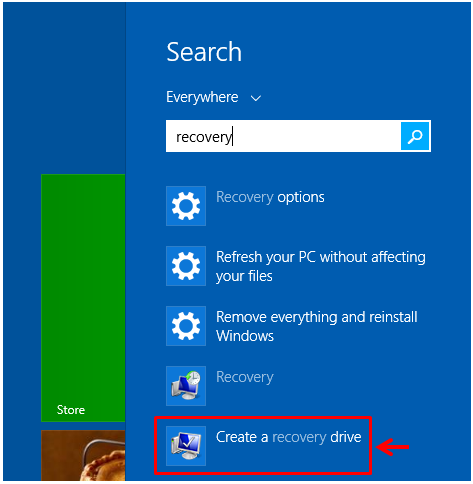
NOTE:
Before starting the wizard, be sure that you have inserted a USB flashdrive where the files will be saved in. You will need to use a memory stick that has at least 2GB of memory capacity and it also needs to be cleared of its contents before you use it.
Moving on, when the wizard opens, you will now be prompted to attach the flashdrive where you want to copy the recovery drive files. Before attaching the drive to your machine, be sure that you have properly prepared it by deleting its contents and if possible, be sure to scan it against any virus or other malware (which will not be needed if the storage device is newly purchased). After connecting the drive, simply click the “Next” button on the wizard.
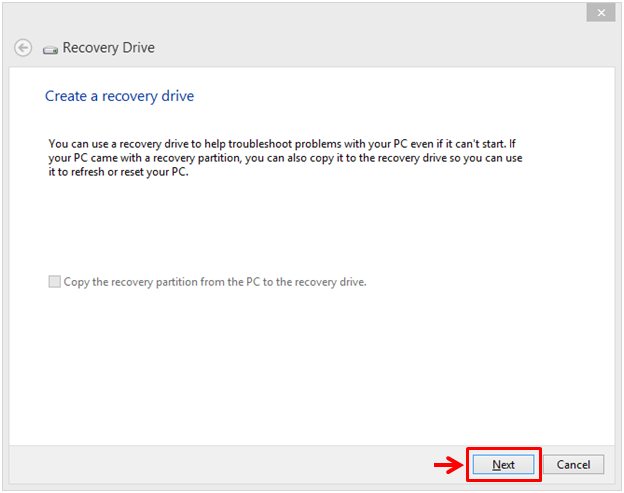
The Wizard will then show a progress bar while it is trying to detect the memory stick or flashdrive that you have attached to your computer. This process will just take a few seconds and once it is completed, you will be able to see your flashdrive listed at the bottom portion of the wizard Window.
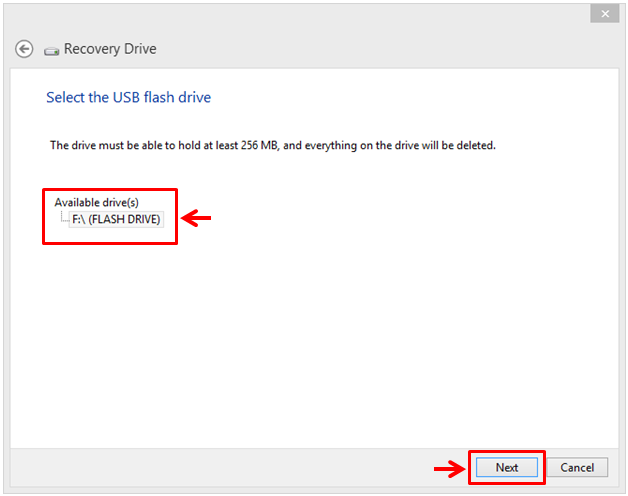
The name of your device will be the same as the name that the manufacturer gave it or if you already changed it into a custom name then you will see it under the “Available drive(s)” section as you can see on the screenshot shown above. From here, simply select the drive and hit the “Next” button at the bottom.
NOTE:
If you did not clear/delete the contents of the flashdrive that you want to use, the wizard will automatically delete them once you start the process of copying recovery drive files. We therefore advice that you secure any important file that is stored in the flashdrive by copying them into a separate computer or storage device to avoid them from being lost.
Now, on the next Window, you will be able to read a warning message that tells you to save any important file that is saved in the flashdrive that you want to use since they will all be deleted in the process. If you’re already able to save them in a separate storage device, you can click on the “Create” button that is located at the bottom of the Window.

The Window that follows will then show a progress bar showing the overall progress of the recovery drive creating process. Just wait until the whole bar turns green (which means that the process is completed) and the wizard will automatically take you to the next Window which contains a message that says “The recovery drive is ready” and from here, all you need to do is click on the button at the bottom that says “Finish”.
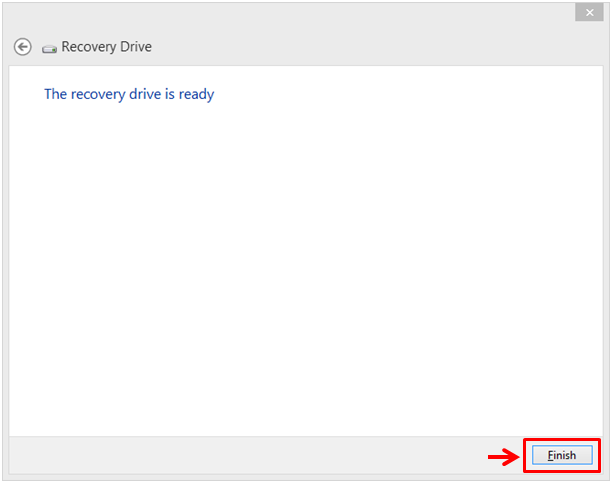
Lastly, you can now remove the USB flashdrive and use it whenever the need arises. Your recovery drive is capable of being used when your computer runs into a trouble that is not possible to be reversed. It is a better way of fixing a problem and you should try to use it first before attempting to reinstall Windows on your computer which will delete everything in it and would make you start from scratch.